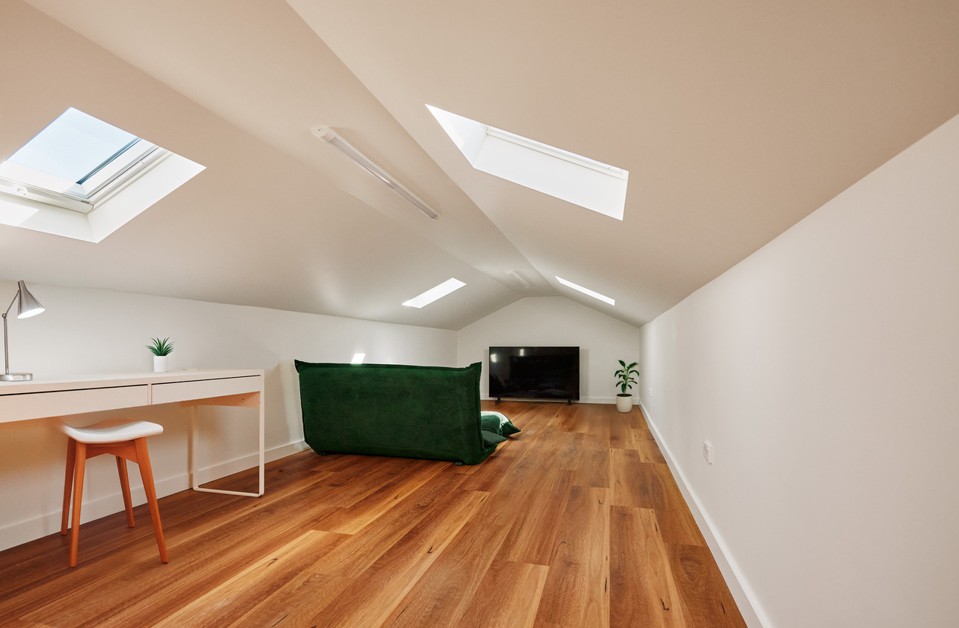For countless families in Sydney, managing space effectively is crucial. Whether you're facing a growing family or simply yearning for a designated home office, gym, or a personal retreat, the pivotal question arises: where can additional space be created without relocating or compromising your backyard?
The solution for thousands of households across the city is often right above your head, in the form of an innovative attic conversion.

Discover Why Attic Conversions Are a Popular Choice Among Sydney Families
An attic conversion, often referred to as a loft conversion, represents one of the most intelligent methods to tap into the untapped potential of your home. Rather than allowing valuable roof space to remain unused, it can be transformed into a bright, warm, and functional room that enhances your living experience.
When executed correctly, an attic conversion can increase your home’s value by 20–30%, particularly if it transitions a two-bedroom residence into a three-bedroom or a three-bedroom into a four. In Sydney’s competitive real estate market, this translates into a substantial lifestyle upgrade and a wise investment opportunity.
What Creative Spaces Can an Attic Conversion Transform Into?
Here are some popular and innovative ideas for attic conversions:
- A serene parents’ retreat complete with ensuite and walk-in robe
- A tranquil study or home office, providing separation from the lively living areas
- Additional bedrooms for children or guests, enhancing accommodation options
- A vibrant teenager’s breakout space or dedicated media room
- A bright and airy creative studio, flooded with natural light
- A highly functional and dust-proof storage area
The beauty of expanding upwards is the flexibility it offers. With the right design approach, the new level integrates effortlessly with the existing home, creating a cohesive look as if it has always been part of the property, rather than an afterthought.
What Are the Steps Involved in a Successful Loft Conversion?
Transforming a roof cavity is not merely about laying floorboards; it entails a comprehensive building process that prioritises safety, comfort, and durability:
- Structural assessment: Homes built prior to the 1960s often feature stronger, simpler trusses, facilitating easier conversions. In contrast, newer properties may necessitate modifications and reinforcements.
- Floor joist enhancements: Upgrades are essential to support the weight of a living area adequately.
- Insulation and finishes: Proper insulation installed between rafters, along with plasterboard walls and ceilings, will create a habitable room that is both comfortable and efficient.
- Stair design: This is a critical decision. Stairs must be positioned thoughtfully to optimise the new space while minimising the impact on the area below.
- Lighting solutions: Installing skylights or dormer windows can transform a previously dark roof cavity into a bright, inviting environment.
- Compliance requirements: Adhering to a minimum ceiling height of 2.2m over 60% of the floor area is essential for the room to be classified as habitable.
At Phase Projects, we collaborate closely with structural engineers and certifiers to guarantee that every attic conversion in Sydney complies with building codes and integrates seamlessly into your home. View the stunning renovation that was part of this attic conversion.

Comparing Attic Conversions to Ground Floor Extensions
In comparison to a ground-floor extension or the addition of a second storey, an attic conversion typically proves to be quicker, less intrusive, and requires fewer approvals. Since the majority of the work occurs within your existing roof space, it usually necessitates less complex planning and can often be approved through a Complying Development Certificate (CDC) rather than undergoing a full Development Application (DA).
Builders generally access the attic space from the roof, ensuring minimal disruption to your family's daily routine and significantly less mess within the home. An attic conversion also preserves your backyard and, unlike a full second-storey addition, is less likely to raise concerns among neighbours regarding privacy or overshadowing.
Why Partner with Phase Projects for Your Attic Conversion?
Not all attic conversions are created equal. While some builders may focus on “budget” conversions, at Phase Projects, we specialise in design-led, high-end transformations. This means:
- Architecturally designed spaces that are tailored to your lifestyle and preferences
- Premium finishes and meticulous detailing that harmonise with the rest of your home
- Engineering precision that ensures long-term performance and safety
- A streamlined process, guiding you from approvals to final styling
We don’t simply build rooms; we create integrated living spaces that enhance your home’s value and elevate your lifestyle.
Are You Ready to Elevate Your Home with an Attic Conversion?
If you’re contemplating an attic conversion in Sydney, whether it be for a bedroom, office, or luxurious retreat, our dedicated team at Phase Projects can assist you from initial concept through to project completion.
We will help you explore the possibilities within your roof space and deliver a result that feels as though it has always been a part of your home.
Your Attic Conversion Questions Answered – FAQs
1. What is an attic conversion?
An attic conversion, also known as a loft conversion, involves transforming unused roof space into a functional living area, such as a bedroom, office, or retreat, enhancing your home's utility.
2. How much value can an attic conversion add to my home?
Depending on your location and design, an attic conversion can increase your home’s value by 20–30%, particularly when it creates an additional bedroom that meets the needs of potential buyers.
3. Do I need council approval for an attic conversion in Sydney?
Yes, most attic conversions necessitate Development Application (DA) approval or a Complying Development Certificate (CDC) to ensure that the space complies with habitable room standards.
4. How tall does my roof need to be for an attic conversion?
You will need a ceiling height of at least 2.2 metres over 60% of the floor area to satisfy the NSW habitable room requirements, ensuring your new space is comfortable and usable.
5. How does an attic conversion compare to a second-storey addition?
An attic conversion utilises existing roof space, often with less cost and disruption; however, it is limited by roof height and structure. In contrast, a second-storey addition provides more design freedom and floor area but requires extensive construction and planning.
6. How long does an attic conversion typically take?
Most attic conversions in Sydney are completed within a timeframe of 6–12 weeks, depending on the complexity of the roof structure and the chosen finishes, allowing for a relatively quick turnaround on your investment.
7. Can my roof structure support an attic conversion?
Older homes constructed before the 1960s generally have stronger, simpler trusses, making conversion easier. Homes built more recently may require modifications, which can be evaluated during our initial site inspection.
8. Will my attic conversion be energy efficient?
Absolutely. With appropriate insulation, ventilation, and glazing, attic conversions can significantly enhance overall thermal performance while creating a comfortable new living space that is energy efficient.
9. What are the most common uses for attic conversions in Sydney?
Popular uses for attic conversions include additional bedrooms, home offices, teen retreats, guest suites, and creative studios. Some families also convert the space into entertainment rooms for leisure activities.
10. Is an attic conversion or loft conversion suitable for every home?
Not necessarily. The suitability of an attic conversion depends on your roof height, pitch, and structural condition. A professional builder will assess whether an attic conversion is feasible or if a second-storey addition would be the better option.
Attic Conversions Sydney: Transforming Roof Space into Luxury Living


Your insights on attic conversions resonate strongly with many families navigating the challenges of space in urban environments like Sydney. In my experience, making the most of existing spaces often leads to unexpected solutions that enhance both functionality and comfort in our homes.